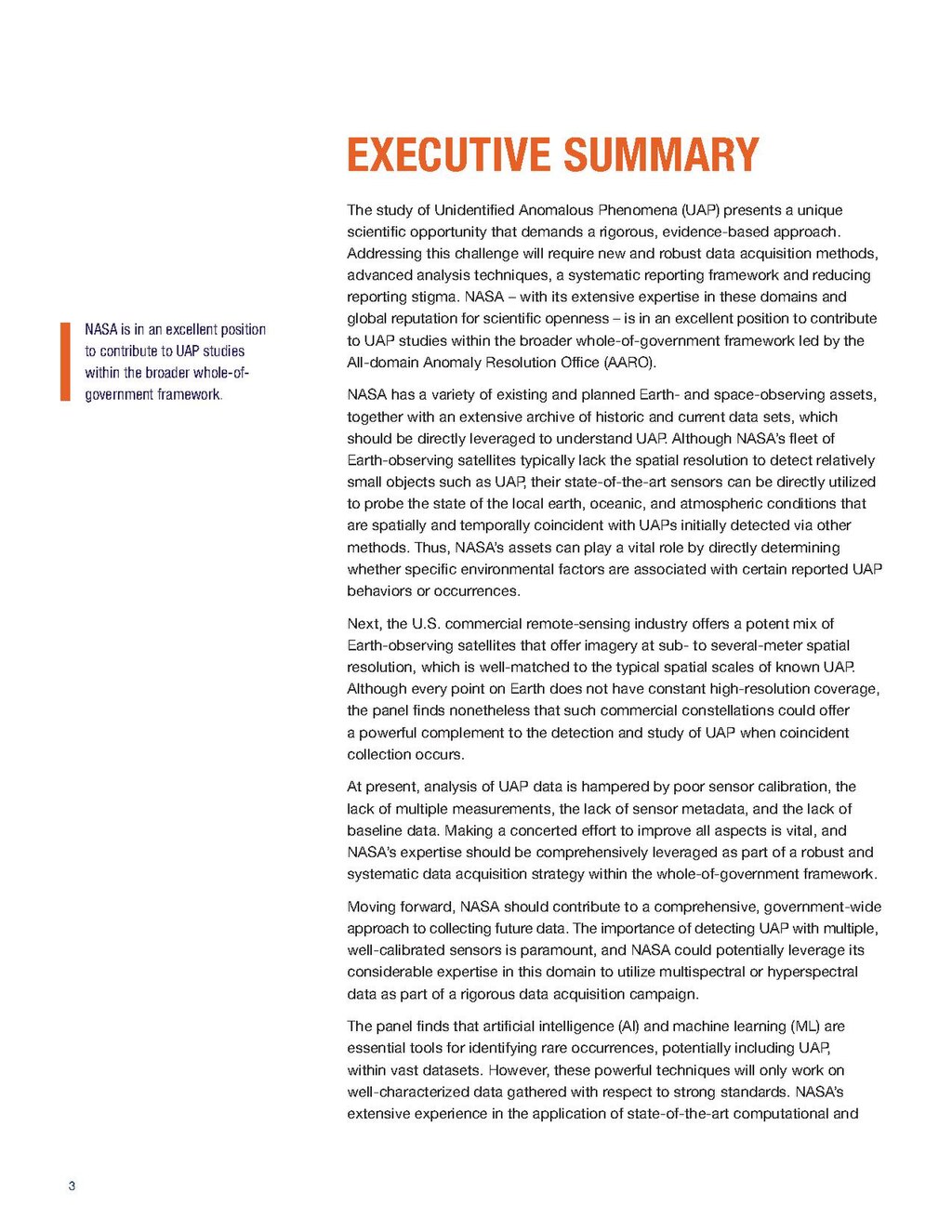EXECUTIVE SUMMARY
NASA is in an excellent position to contribute to UAP studies within the broader whole-of-government framework.
The study of Unidentified Anomalous Phenomena (UAP) presents a unique scientific opportunity that demands a rigorous, evidence-based approach. Addressing this challenge will require new and robust data acquisition methods, advanced analysis techniques, a systematic reporting framework and reducing reporting stigma. NASA–with its extensive expertise in these domains and global reputation for scientific openness–is in an excellent position to contribute to UAP studies within the broader whole-of-government framework led by the All-domain Anomaly Resolution Office (AARO).
NASA has a variety of existing and planned Earth- and space-observing assets, together with an extensive archive of historic and current data sets, which should be directly leveraged to understand UAP. Although NASA's fleet of Earth-observing satellites typically lack the spatial resolution to detect relatively small objects such as UAP, their state-of-the-art sensors can be directly utilized to probe the state of the local earth, oceanic, and atmospheric conditions that are spatially and temporally coincident with UAPs initially detected via other methods. Thus, NASA's assets can play a vital role by directly determining whether specific environmental factors are associated with certain reported UAP behaviors or occurrences.
Next, the U.S. commercial remote-sensing industry offers a potent mix of Earth-observing satellites that offer imagery at sub- to several-meter spatial resolution, which is well-matched to the typical spatial scales of known UAP. Although every point on Earth does not have constant high-resolution coverage, the panel finds nonetheless that such commercial constellations could offer a powerful complement to the detection and study of UAP when coincident collection occurs.
At present, analysis of UAP data is hampered by poor sensor calibration, the lack of multiple measurements, the lack of sensor metadata, and the lack of baseline data. Making a concerted effort to improve all aspects is vital, and NASA's expertise should be comprehensively leveraged as part of a robust and systematic data acquisition strategy within the whole-of-government framework.
Moving forward, NASA should contribute to a comprehensive, government-wide approach to collecting future data. The importance of detecting UAP with multiple, well-calibrated sensors is paramount, and NASA could potentially leverage its considerable expertise in this domain to utilize multispectral or hyperspectral data as part of a rigorous data acquisition campaign.
The panel finds that artificial intelligence (AI) and machine learning (ML) are essential tools for identifying rare occurrences, potentially including UAP, within vast datasets. However, these powerful techniques will only work on well-characterized data gathered with respect to strong standards. NASA's extensive experience in the application of state-of-the-art computational and
3
